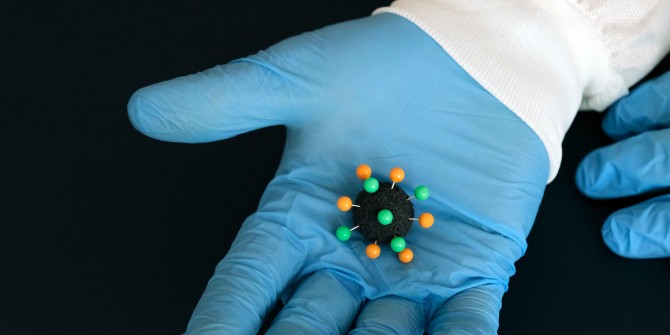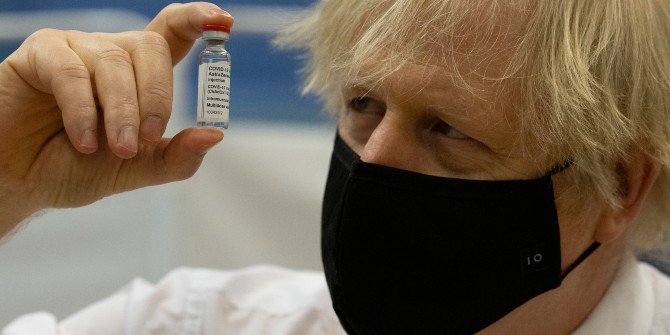Lateral flow tests have proved controversial in the scientific community. But they are cheap, fast and readily available, say Bob Nichol and Dean Machin (University of Portsmouth), and campus exercises show that with properly-trained testers, devolved tracing and incentives to get a test, they can halt outbreaks of COVID-19.
The reliability of Lateral Flow Device (LFD) tests has divided the scientific community. On one side are Jon Deeks of the University of Birmingham and his colleagues, who are calling on the government to stop the rollout of LFD testing. Another group of eminent scientists who have published an 11-page rebuttal of Deeks’ argument. Sayre’s Law says that the intensity and bitterness of academic disputes is inversely proportional to their importance, but this is an exception. It is worth explaining why.
Regular, mass testing is essential if the country is to move back towards normal life before universal (or near universal) vaccination. There are presently two commonly-used types of COVID-19 test: PCR tests, which collect the RNA of SARS-Cov-2 (the virus that causes the disease), and LFD tests, which detect proteins around the RNA.

PCR tests are laboratory processed, have an overnight (at best) turnaround, and are relatively expensive. There is also a limit to the country’s present laboratory capacity. These are significant hindrances to using PCR tests for regular, mass testing. LFD test results, on the other hand, can be processed where the tests are taken in less than 20 minutes, are readily available, and are much cheaper. They are a good solution to the problem – although not if Deeks et al are right, and the results are unreliable. This dispute is more than academic.
Since September 2020 the University of Portsmouth has been (asymptomatic) testing students and staff. Until November we used PCR tests. Due to the increased demand on local NHS laboratories we then switched to LFD tests. We have also been RNA sequencing the virus, and we have developed our own local tracing protocol, including mass testing in halls of residences if an outbreak is suspected. With over 15,000 tests conducted, we have learned a huge amount about COVID-19 testing and the multitude of issues connected to controlling the spread of this dreadful virus.
Fundamentally, LFD tests can be as reliable as PCR tests. Some issues need to be addressed, but abandoning LFD tests now would be bizarre. It would be akin to insisting on having on the perfect compass when you have no map and no particular plans to get one. The compass is not the problem, and your priorities lie elsewhere. A better solution includes mass, regular LFD testing carried out by properly trained staff; more effective tracing, devolved to local areas with sufficient resources; and a policy for those self-isolating based on support, not threats.
Our validation exercise showed that the LFD test picked up everyone with COVID-19.
The central case that LFD tests are ‘not fit for purpose’ is based on several pilots, one of which suggests that the tests detect under half of people infected with COVID-19. When the University of Portsmouth switched from PCR to LFD tests, we had concerns about the reliability of LFDs so we undertook a series of validation exercises. We tested 97 members of our University community with both the PCR and LFD tests. We found 92% agreement. The only disagreement was false positives, namely that the LFD tests identified SARS-Cov-2 virus where none was currently active. In other words, our validation exercise showed that the LFD test picked up everyone with COVID-19 at that moment.
How do we reconcile our validation results of a small number of people with other pilots? In our exercise (but not all pilots), tests were administered by trained nurses. This makes a huge difference.
This conclusion is consistent with other evaluations such as the study conducted by Public Health England (PHE) with the University of Oxford and a large US study. With properly-trained testers, the US study found fewer than 1% false negatives; in other words it was accurate in over 99% of cases. The PHE-Oxford study showed that LFDs can detect 77% of positive cases (compared to PCR) when tests are administered by trained professionals. This figure falls to 58% when individuals self-test (which involves sticking something quite far up your nose and down your throat).
Tests administered by those who are properly trained has multiple benefits. People with proper training reliably follow the instructions, which is a learned skill. They do not suffer from the squeamishness we all experience when faced with the prospect of sticking something very far up our own nose. They know how to get enough of a sample to make a test effective. Another benefit, although not connected to test accuracy, is efficiency (which is extremely important for regular, mass testing). Properly-trained people are able to administer the tests quicker (45 seconds per test in our experience).
Nonetheless, ensuring testers are properly trained is not a silver bullet. A single test can say whether a person is infectious at the time of the test, but cannot say whether they will be un-infectious forever, or even the next day. A one-shot testing regime is not sufficient, whatever test is used. Regular testing of critical workers and the general public is necessary.
The ‘trace’ bit of Test and Trace has never worked well enough. Our experience suggests that a centrally-run and largely remote trace scheme is not sufficiently proactive or agile. Since January nearly nine in 10 Portsmouth staff and students who have tested positive have shown very high levels of virus (and therefore infectiousness). In response we have adopted our own tracing protocol, largely based on the speed with which LFD results are produced. In one case we tested over half of the students in a single hall of residence in under 24 hours after identifying a cluster of six positive tests. Fortunately, we found only one additional positive case. There are two key inferences. First, a rapid response requires a well-resourced, local tracing system. Second, it is impossible if you have to wait overnight (or longer) for test results. Successful tracing requires rapid test results and LFDs are the best rapid tests we have.
Any successful regular, mass testing system needs people’s active support and cooperation. Sanctions and material rewards are part of this, but not the whole story. The University’s experience has shown that while staff and students are extremely responsible – as our evidence about the fall in student infections pre-Christmas has shown – some people avoid testing because of the consequences for them and, often, their friends.
Instead of fearing the consequences of testing positive, people need to see the benefit of testing negative. The University is piloting a scheme that requires anyone entering our main library to demonstrate that they have taken a test. The pilot is unfinished but numbers in the library have increased, as have numbers getting regular testing. Our approach not only connects getting a test with something our students already want, it also reassures people that others near them are less likely to be infectious.
If Britain is to get on top of this dreadful virus without waiting for universal vaccination, we should focus on the key problem. This is not the reliability of LFD tests. Carried out by properly-trained staff, LFD testing is reliable and is a vital part of mass, regular testing. Other things need to happen. Test and Trace needs to be more effective, almost certainly through devolved and well-resourced local tracing. The government needs a self-isolation policy based on support, not threats, and which enables people to see the benefits of a negative result. These areas should be the focus of public debate – not the merits of LFD tests compared to the supposed ‘gold standard’ of PCR.
This post represents the views of the author and not those of the COVID-19 blog, nor LSE.





